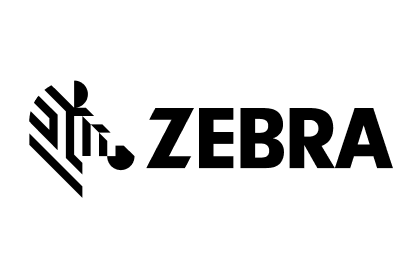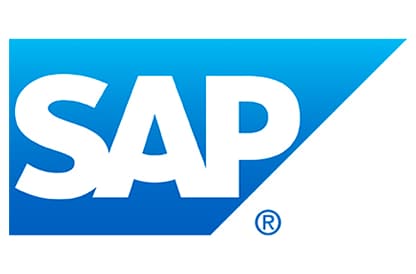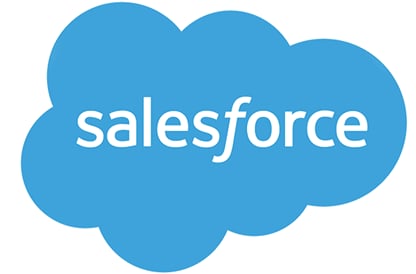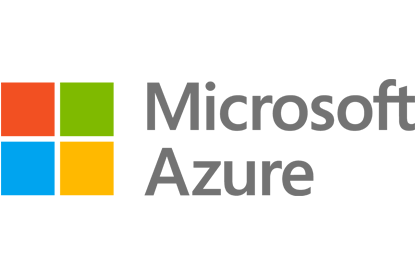Why OpenText
Why OpenText
Overview Why OpenText
OpenText brings decades of expertise to help you unlock data, connect people and processes, and fuel AI with trust
Manage and connect data
Unify data seamlessly across your enterprise to eliminate silos, improve collaboration, and reduce risks
AI-ready information
Get AI-ready and transform your data into structured, accessible, optimized information
Built-in security and compliance
Meet regulatory and compliance requirements and protect your information throughout its lifecycle
Empowering people
Overview Empowering people
OpenText helps people manage content, automate work, use AI, and collaborate to boost productivity
Customers
See how thousands of companies around the world are succeeding with innovative solutions from OpenText
Employees
Our people are our greatest asset; they are the life of the OpenText brand and values
Corporate Responsibility
Learn how we aspire to advance societal goals and accelerate positive change
Partners
Find a highly skilled OpenText partner with the right solution to enable digital transformation
How we compare
Content Management
Service Management
Deploy anywhere
Overview Deployment options
Explore scalable and flexible deployment options for global organizations of any size
Sovereign cloud
Local control. Global scale. Trusted AI
Private cloud
Your cloud, your control
On-premises
Free up resources, optimize performance and rapidly address issues
Public cloud
Run anywhere and scale globally in the public cloud of your choice
AI leadership
Overview Aviator AI
See information in new ways
OpenText™ Aviator AI
AI that understands your business, your data, and your goals
OpenText™ MyAviator
Say hello to faster decisions. Your secure personal AI assistant is ready to get to work
OpenText™ Business Network Aviator
Gain better insights with generative AI for supply chains
OpenText™ Content Aviator
Power work with AI content management and an intelligent AI content assistant
OpenText™ Cybersecurity Aviator
Improve your security posture with AI cybersecurity and agile threat detection
OpenText™ DevOps Aviator
Enable faster app delivery, development, and automated software testing
OpenText™ Experience Aviator
Elevate customer communications and experiences for customer success
OpenText™ Service Management Aviator
Empower users, service agents, and IT staff to find the answers they need
Aviator AI
Overview Aviator AI
See information in new ways
OpenText™ Aviator AI
AI that understands your business, your data, and your goals
OpenText™ MyAviator
Say hello to faster decisions. Your secure personal AI assistant is ready to get to work
OpenText™ Business Network Aviator
Gain better insights with generative AI for supply chains
OpenText™ Content Aviator
Power work with AI content management and an intelligent AI content assistant
OpenText™ Cybersecurity Aviator
Improve your security posture with AI cybersecurity and agile threat detection
OpenText™ DevOps Aviator
Enable faster app delivery, development, and automated software testing
OpenText™ Experience Aviator
Elevate customer communications and experiences for customer success
OpenText™ Service Management Aviator
Empower users, service agents, and IT staff to find the answers they need
Analytics
Overview Analytics
Predict, act, and win with real-time analytics on a smarter data platform
OpenText™ Aviator Search(AI)
Give users access to the answers they need, faster and easier, with multi-repository AI-based search that lets you contextualize everything from clicks to conversations
Business Network
Overview Business Network
Connect once, reach anything with a secure B2B integration platform
Content
Overview Content
Reimagine knowledge with AI-ready content management solutions
OpenText™ Content Aviator(AI)
Supercharge intelligent workspaces with AI to modernize work
Cybersecurity
Overview Cybersecurity
Integrated cybersecurity solutions for enterprise protection
OpenText Cybersecurity for SMBs & MSPs
Purpose built data protection and security solutions
OpenText™ Cybersecurity Aviator(AI)
Reinvent threat hunting to improve security posture with the power of agile AI
DevOps
Overview DevOps
Ship better software—faster—with AI-driven DevOps automation, testing, and quality
Experience
Overview Experience
Reimagine conversations with unforgettable customer experiences
Observability and Service Management
Overview Observability and Service Management
Get the clarity needed to cut the cost and complexity of IT operations
OpenText™ Service Management Aviator(AI)
Redefine Tier 1 business support functions with self-service capabilities from private generative AI
APIs
Overview APIs
Build custom applications using proven OpenText Information Management technology
OpenText™ API Services
Build it your way with OpenText Cloud APIs that create the real-time information flows that enable custom applications and workflows
Device and Data Protection
Overview Device and Data Protection
Protect what matters, recover when it counts
Unified Endpoint Management Tools
- OpenText™ Endpoint Management
- OpenText™ ZENworks Suite
- OpenText™ ZENworks Service Desk
- OpenText™ ZENworks Configuration Management
- OpenText™ ZENworks Endpoint Security Management
- OpenText™ ZENworks Full Disk Encryption
- OpenText™ ZENworks Endpoint Software Patch Management
- OpenText™ ZENworks Asset Management
Solutions
Trusted Data & AI
Overview Trusted Data & AI
Secure information management meets trusted AI
OpenText AI Data Platform
A unified data framework to elevate data and AI trust
OpenText Aviator Studio
A place where you can build, deploy, and iterate on agents in your data's language
OpenText Discovery
A set of tools to help ingest data and automate metadata tagging to fuel AI
OpenText Data Compliance
A suite of services and APIs that make governance proactive and persistent
OpenText Aviator AI Services
Professional services experts who help you on your AI journey
Information Reimagined
Overview Information Reimagined
Get greater visibility and sharper insights from AI-driven information management. Ready to see how?
Knowledge reimagined
Transform daily work with enterprise content management powered by AI
Service Management reimagined
Cut the cost and complexity of IT service management, AIOps, and observability
Connections reimagined
AI-powered B2B integration for supply chain success
Conversations reimagined
Drive value, growth, and loyalty with connected customer experiences
Engineering reimagined
Agile development and software delivery? It only seems impossible
Security reimagined
Cybersecurity for the Enterprise
Decisions reimagined
Unlock insights with AI data analytics
Artificial Intelligence
Overview Aviator AI
See information in new ways
OpenText™ Aviator AI
AI that understands your business, your data, and your goals
OpenText™ MyAviator
Say hello to faster decisions. Your secure personal AI assistant is ready to get to work
OpenText™ Business Network Aviator
Gain better insights with generative AI for supply chains
OpenText™ Content Aviator
Power work with AI content management and an intelligent AI content assistant
OpenText™ Cybersecurity Aviator
Improve your security posture with AI cybersecurity and agile threat detection
OpenText™ DevOps Aviator
Enable faster app delivery, development, and automated software testing
OpenText™ Experience Aviator
Elevate customer communications and experiences for customer success
OpenText™ Service Management Aviator
Empower users, service agents, and IT staff to find the answers they need
Industry
Overview Industry solutions
Improve efficiency, security, and customer satisfaction with OpenText
Energy and resources
Transform energy and resources operations with cloud, cybersecurity, and AI
Financial services
Boost customer experience, compliance, and efficiency with AI
Government
Reimagine your mission with government-secure information management
Healthcare and life sciences
Improve care delivery and patient engagement with AI-powered solutions
Legal
Modernize legal teams with automated, AI-powered legal tech solutions
Manufacturing
Modernize manufacturing operations and logistics to reduce costs and ensure compliance
Retail and consumer goods
Enhance consumer engagement with omnichannel retail solutions and AI
Enterprise Application
Overview Solutions for Enterprise Applications
Run processes faster and with less risk
Services
Services
Overview Services
Achieve digital transformation with guidance from certified experts
Professional Services
Modernize your information management with certified experts
Customer Success Services
Meet business goals with expert guidance, managed services, and more
Support Services
Turn support into your strategic advantage
Managed Services
Free up your internal teams with expert IT service management
Learning Services
Discover training options to help users of all skill levels effectively adopt and use OpenText products
Professional Services
Overview Professional Services
Modernize your information management with certified experts
Customer Success Services
Overview Customer Success Services
Meet business goals with expert guidance, managed services, and more
Support Services
Overview Support Services
Turn support into your strategic advantage
Managed Services
Overview Managed Services
Free up your internal teams with expert IT service management
Learning Services
Overview Learning Services
Discover training options to help users of all skill levels effectively adopt and use OpenText products
Partners
Find a Partner
Overview Find a partner
Find a highly skilled OpenText partner with the right solution to enable digital transformation
Cloud Partners
Overview Cloud Partners
OpenText partners with leading cloud infrastructure providers to offer the flexibility to run OpenText solutions anywhere
Enterprise Application Partners
Overview Enterprise Application Partners
OpenText partners with top enterprise app providers to unlock unstructured content for better business insights
Partner Solutions
Overview Partner Solutions
Discover flexible and innovative offerings designed to add value to OpenText solutions
Resources for Partners
Overview Resources for Partners
Discover the resources available to support and grow Partner capabilities
Support
Overview Customer Support
Get expert product and service support to accelerate issue resolution and keep business flows running efficiently
Resources
Overview Resources
Explore detailed services and consulting presentations, briefs, documentation and other resources
Choose your region:
Europe, Middle East and Africa
Asia–Pacific
 Zebra Technologies
Zebra Technologies
Technology provider accelerates complex end-to-end user acceptance and performance testing projects for global ERP systems with OpenText

About Zebra Technologies

-
Employees:9,800
-
Annual sales:$5 Billion
-
Global reach:55 Countries
Summary
Challenges
- Rigorously testing its enterprise software.
- Ensuring that end-to-end processes run efficiently.
- Putting systems in place that can handle expected demands.
Solution
- Acquired powerful end-to-end test management.
- Implemented a uniquely robust cloud solution.
Results
Saved months of manual labor with test automation
Built a flexible, agile foundation for future growth
Provided detailed real-time analytics
Challenges
- Rigorously testing its enterprise software
- Ensuring that end-to-end processes run efficiently
- Putting systems in place that can handle expected demands
Zebra’s complex and fast-moving global operations depend on the smooth and reliable running of several major business systems including Oracle ERP, Siebel, and Salesforce CRM. The internal IT team is responsible for keeping these systems updated with the latest patches and features—which entails significant testing before the new software is released to business users.
Gunjan Arya, manager information systems at Zebra Technologies, explained the organization’s requirements, “We’re increasingly focused on end-to-end, enterprise-level testing that cuts across all verticals. Most of our common workflows span multiple systems and teams across the globe, so it’s vital that we’re able to manage correspondingly broad test scenarios.”
A Zebra employee in the US may create a sales opportunity in Salesforce, another employee may then create a related order in Siebel, and the process flow will continue through various ERP, logistics, and finance systems—potentially involving up to 35 distinct functional teams.
“When we test new or updated software, we want to be sure that it works in the context of all the upstream and downstream processes,” said Arya. “That means coordinating and tracking all testing and approval processes across multiple systems and teams in different locations and time zones. And of course, we want to do that as quickly and efficiently as possible, without sacrificing any visibility.”

OpenText Enterprise Performance Engineering (LoadRunner Enterprise) works equally well across legacy applications and modern web applications, so we can do everything in a single solution.
Solution
Zebra implemented OpenText™ Enterprise Performance Engineering (LoadRunner Enterprise) and OpenText™ Application Quality Management (ALM Quality Center) to rigorously test its enterprise software, ensuring that end-to-end processes run efficiently and systems can handle expected demand.
Products deployed
-
OpenText™ Enterprise Performance Engineering
Simulate real-world conditions to performance test software while sharing load resources across the globe via on-premises or cloud deployments
-
OpenText™ Application Quality Management
A software quality management solution that helps you govern application lifecycle management activities with rigorous, auditable processes
Acquiring powerful end-to-end test management
For system integration testing and user acceptance testing, Zebra relies on OpenText Application Quality Management as its key solution for managing test scenarios and results.
“The main area where OpenText Application Quality Management (ALM Quality Center) helps is the end-to-end testing of scenarios spanning multiple teams,” said Arya. “As soon as one testing stage is complete, the workflows we build in OpenText Application Quality Management (ALM Quality Center) automatically trigger a notification to the next person in the chain, including all the required information for them to take action. We have integrated the solution with our automation tool, so that we can automatically run the appropriate tests at each stage and then pull the evidence back into OpenText Application Quality Management (ALM Quality Center), giving us an audit trail of actions and approvals.”
Zebra uses OpenText Application Quality Management to classify scenarios into sets of tests, then assigns the resulting test scripts to different teams. Each team is responsible for completing all the tests in the set(s) assigned to them. The execution is usually sequential, with OpenText Application Quality Management automatically triggering instructions and reminders to the relevant people when a stage is completed—but in some cases, processes run in parallel. At the end of each multi-step testing run—spanning multiple test teams, potentially in different countries and regions—the relevant business process owner can review the audit trail in OpenText Application Quality Management and provide final sign-off. The system makes it easy to see pending and overdue activities, and to review identified software defects by their level of criticality.
“When it comes to making sure end-to-end processes are working, a tool like Jira is not the answer,” said Arya. “When testing cuts across multiple teams, that’s where the power of OpenText Application Quality Management (ALM Quality Center) comes into play. The real-time reporting through the Excel Plug-in is especially powerful for pinpointing bottlenecks in our testing flows. We can easily see how many scripts are pending with each team, how we are performing against the plan, what kinds of defects we’re finding, and so on. The OpenText solution gives us excellent visibility into the progress of testing.”
Zebra also values the flexibility of OpenText Application Quality Management, which enables the organization to write custom workflows rapidly and easily, and then edit them for new requirements. “The customization is very useful, as are the plug-ins for Microsoft Excel,” says Arya. “Once we’ve built the charts and reports we want, we can easily refresh the data from OpenText Application Quality Management (ALM Quality Center) and see all the latest metrics.”
Having used an on-premises implementation of OpenText Application Quality Management for more than a decade, Zebra recently migrated it to OpenText SaaS. The SaaS model significantly reduces Zebra’s costs associated with buying, maintaining, and managing its own infrastructure, as well as providing non-disruptive patching and ongoing functional upgrades at zero additional cost.
“When we were on-premises, every upgrade would require going to tender with an external partner,” said Arya. “With the OpenText Application Quality Management (ALM Quality Center) , those costs are gone, and the whole process is fast, easy, and secure.”
Implementing a uniquely robust performance and load testing solution
In addition to managing system integration testing and user acceptance testing for end-to-end business workflows spanning multiple systems, Zebra must also ensure that the underlying systems are sufficiently performant and scalable for current and projected needs. Here, the challenge is to automate performance and load testing across multiple protocols spanning both legacy and modern technologies.
Zebra’s strategic solution is OpenText Enterprise Performance Engineering. “We have explored other tools in the market, but I can say with confidence that there is no better alternative than OpenText Enterprise Performance Engineering (LoadRunner Enterprise) for automation,” said Arya. “It offers something very robust and unique, and it’s very hard to match.”
OpenText Enterprise Performance Engineering is used by the quality assurance team and multiple other technical teams within Zebra, including networking, database administrators, and the server and storage teams. While the focus is on testing on-premises applications, Zebra also uses OpenText Enterprise Performance Engineering for performance and load testing for several of its cloud applications.
“For volume testing, we might do something like booking 15,000 sales orders in one hour with 500 concurrent users, and see what impact this has on the infrastructure,” said Arya. “We’ll typically go beyond any realistic load so that we have confidence in the scalability of our solutions to meet any unexpected spikes in demand.”
Zebra uses the built-in analytics tools in OpenText Enterprise Performance Engineering to drill down into performance, overlaying software metrics such as transaction response times with infrastructure metrics such as CPU and memory utilization. “By overlaying the various data points, we can easily pinpoint where and when any performance issues begin, which makes them much faster to resolve,” said Arya. "OpenText Enterprise Performance Engineering (LoadRunner Enterprise) works equally well across legacy applications and modern web applications, so we can do everything in a single solution. It also has no problems working in our modern security environment.”

OpenText Application Quality Management (ALM Quality Center) helps us with large and complex software testing projects where we have teams located in different places, saving significant time and effort while keeping all activities coordinated.
Results
Zebra has saved massive amounts of manual labor and development time by improving the implementation, performance, and tracing of software testing protocols.
Saving months of manual labor with test automation
Gunjan Arya sees OpenText Application Quality Management and OpenText Enterprise Performance Engineering as the “backbone” of the software quality center of excellence at Zebra. OpenText Application Quality Management provides end-to-end traceability for all processes involved in system integration testing and user acceptance testing, bringing speed, transparency, and automation to complex testing projects that span multiple teams and geographies.
“The workflow and process customizations in OpenText Application Quality Management (ALM Quality Center) are so powerful that nearly all processes tied to test-script development, test execution, defect management, reporting, and notifications can be automated to a great degree,” said Arya.
With performance testing automated through OpenText Enterprise Performance Engineering, Zebra can ensure that its most critical systems are always able to meet demand from internal users. “Writing good test code manually from scratch might take a whole team several months,” said Arya. “With OpenText Enterprise Performance Engineering (LoadRunner Enterprise), we record the transactions, and the solution generates the code automatically. For our legacy applications, we sometimes then need to do a small amount of manual correlation to debug the code, but the intervention is minimal, saving us a huge amount of time. We typically have ready-to-run code within an hour.”
Built a flexible, agile foundation for future growth
Zebra also values the longevity and licensing flexibility of the OpenText solutions. Arya commented, “There is a lot of experience in the market and a very solid user community, so we can easily access the resources we need. And the flexibility of the licensing means that we can choose the most cost-effective option for us depending on what systems we’re currently testing.”
He concluded, “Our experience of working with OpenText over the years is overwhelmingly positive. The support is easy to access, especially through our customer success managers, and we’ve appreciated the ability to work directly with the R&D team at times to get customizations into the product.”





